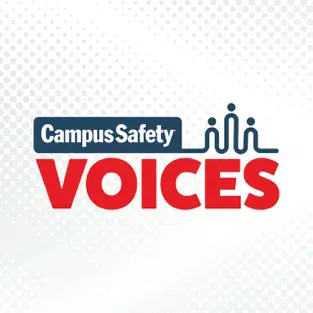Budget limitations are some of the biggest challenges campuses face when it comes to making security improvements. Whether it’s a school, college, hospital, or church, just to name a few, most safety and security leaders are expected to do a lot with little when it comes to protecting their facilities.
In fiscal year 2022-2023, Cesar Gracia, director of public safety and chief of police at East Tennessee State University and a 2023 Campus Safety Director of the Year finalist, was able to nearly double the campus police department’s budget. How? By changing the department from a traditional police organization to one whose primary focus is community policing.
“To me, it’s extremely important that officers are outside of their cruisers, interacting with the community. Having experience as a road officer off a campus and then also as a state police agent, those were experiences that I was able to acquire in a limited fashion,” Gracia told Campus Safety. “Once I moved on to a campus environment, I found it was so much more important and, in my opinion, easier. We don’t have the high volume of calls that your street officers and county deputies normally encounter, so I explained to my officers that our end goal was we needed to be seen outside of our cruisers, meeting our students, faculty, staff, and visitors, getting to know them on a first-name basis.”
To support this strategic change in policing, the department started several on-campus initiatives, including the Walk and Talk Program, which aimed to increase the department’s visibility. Prior to Gracia taking over the department in 2020, officers would only enter a building if there was a call for service. Through this new program, officers are constantly walking around campus buildings and outdoor areas. In 2021, 2,738 walkthroughs were documented. In 2022, that number jumped to nearly 3,400.
“We immediately began to get feedback from faculty staff and students, and they were just very complimentary of the program,” said Gracia. “They really enjoyed seeing the officers out. It made them feel safer and specifically when they got to know them on a personal level.”
[promo_content slug=”2023-doy-winner-announced-at-csc”]
Another initiative that helped increase visibility was the Meet Us Before You Need Us Campaign.
“We set up a tent on campus and we have hot chocolate, coffee, apple cider, some cookies, and we strategically locate our pop-up tent where there’s a lot of foot traffic, specifically with the students,” described Gracia. “We have a therapy dog that we bring. The kids come out, they pet the dog, and they get to know us. We begin to interact with each other.”
While community policing initiatives are largely geared toward getting to know students, the department’s increased visibility caught the eyes of staff and administrators which ultimately led to an increased department budget.
“We got great feedback from the president’s office on down, and they’re behind it 100%, which has assisted in us acquiring equipment and things of that nature — once they saw that we were doing more than simply answering a call, getting back in the cruiser, and driving on,” he said.
Following the implementation of these programs and others, during budget meetings, Gracia was asked to produce a document with all of his department’s accomplishments. The document included the expected accomplishments, such as various training for ETSU officers and between other public safety agencies, but it also included campus contacts the department made through its community policing initiatives.
“If they were on the fence on whether they wanted to give us more money or not, that’s what helped,” said Gracia. “And I’ll say this next year’s budget is looking even better. I about fell over. I just had a meeting the other day and I couldn’t believe it.”
While much of the budget will be used to continue current community policing programs and to establish new ones, some will be used to give officers a much-deserved $3,500 pay raise and an additional 5% pay increase in November.
“Our campus is safe with high visibility, great interpersonal communications, and establishing relationships,” Gracis said. “It has also paid off on the officer side, so it makes our campus safer. The campus appreciates them, and they’re being compensated for it, so I’m beside myself. I’m so excited about that.”
Additional topics covered in the interview include:
- How Gracia adapted to policing a college campus after training officers at Walters State Regional Training Academy for 12 years (1:51)
- How Gracia informed officers about the switch to community policing and how he approached situations where officers seemed resistant to change (7:42)
- Recommendations he has for other leaders looking to focus more on community policing (11:01)
Watch the full interview here or listen on the go on Apple or Spotify.









